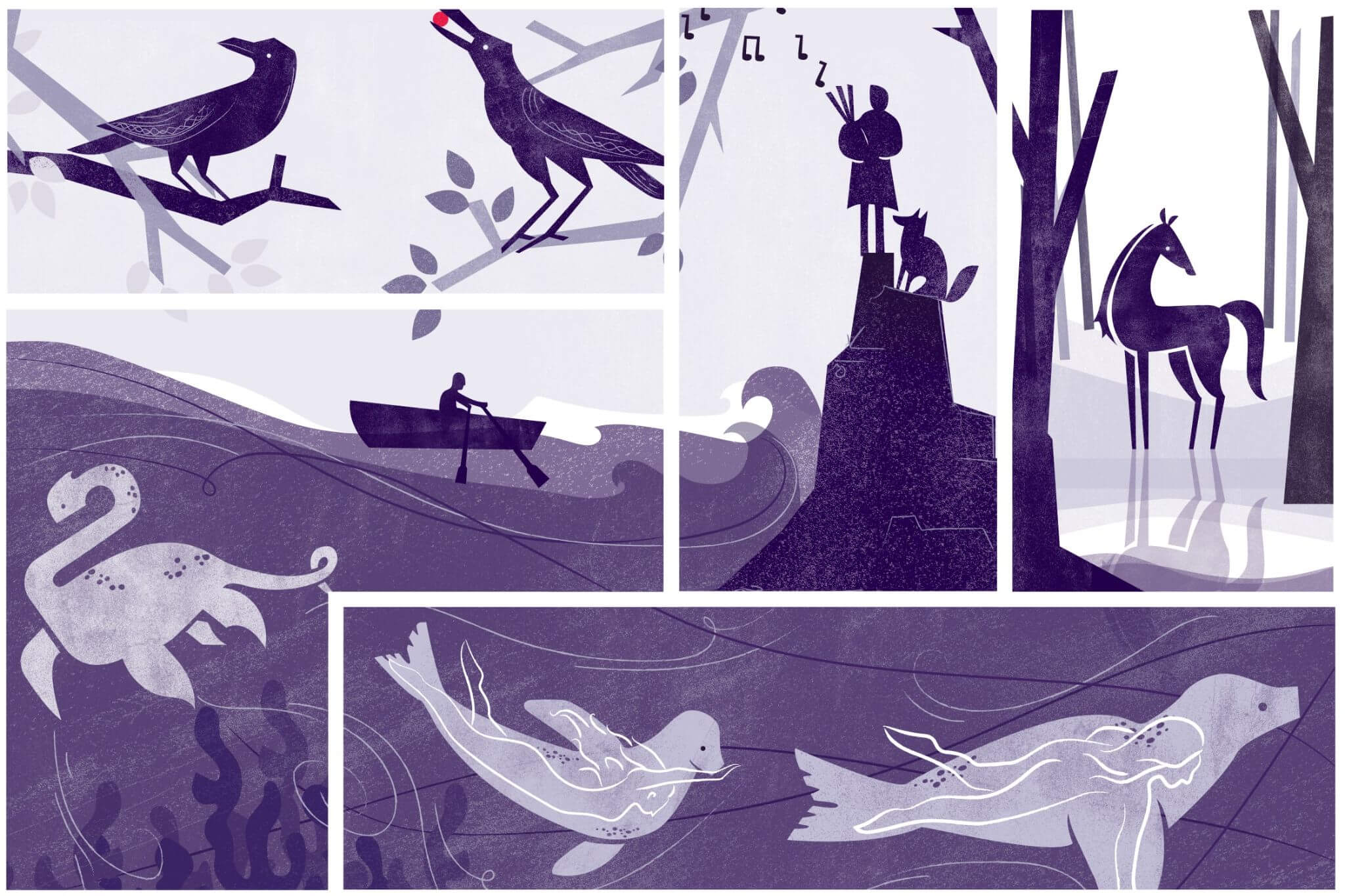Views from Auld Mill Bay across to Pennan Head and Troup Head.
© Discover Fraserburgh / Damian Shields
Baaa-d luck
Some farmers, particularly in the north of Scotland, believe that the birth of a black-faced sheep brings bad luck for all the flock; this is where the expression "black sheep of the family" originates. If a sheep has twins, both born with black faces, this indicates that a poor lambing season lies ahead.
Anstruther Harbour, Fife
Something fishy going on...
Fishing communities are known for having lots of superstitions and customs. Scottish fishermen in the likes of the Outer Hebrides and the East Neuk of Fife would not sail if they passed a minister on the way to their fishing boats, as it was believed this was a bad omen.
Lucky white heather
© © iStock
Although it is the symbol of my sorrow, may the white heather bring good fortune to all who find it.
The tears of a celtic heroine
While purple heather blooms in abundance on our hillsides, white heather is a lot less common, but is supposedly very, very lucky indeed.
The origins of this lie in a Celtic legend dating from the 3rd century. Malvina, daughter of legendary warrior-poet Ossian, cried after finding out her lover had died in battle, her tears supposedly turning purple heather white. Malvina declared, "Although it is the symbol of my sorrow, may the white heather bring good fortune to all who find it."
Historically, clansmen would wear white heather in battles for protection, and even nowadays at weddings, grooms will often wear sprigs of the flower in their buttonhole and Scottish brides have the bloom in their bouquet.
Greyfriars Kirk in Edinburgh
A sterling gift
Known as the practice of "handselling", it’s considered lucky to place silver, often a coin, in a new born baby’s hand. This would supposedly bring great wealth to them in later life. In modern times, silver spoons are sometimes gifted at Christenings.
Halloween's celtic connections
It has been said that Scotland in fact invented the tradition of Halloween and the superstitions and traditions around it. The celebration as we know it today derived from the old Celtic pagan festival of Samhain. Dressing up, known as guising, was a way to disguise yourself from the fairies and spirits, and offerings of food would be made.
The tradition of "dookin" for apples, where children attempt to retrieve apples from a bucket of water using only their mouths is thought to be a reference back to the days of the druids. According to ancient druid lore, apples were considered to be a sacred fruit.
Hogmanay fireworks
© VisitScotland / Kenny Lam
Start New Year on the right foot
In the New Year, or Hogmanay, as we like to call it, Scottish people “first-foot” one another, which means to be the first to enter into somebody else’s home. Traditionally, the first-footer should be a tall, dark haired gent who comes bearing gifts of coal, a silver coin, black bun, salt and whisky, symbolising good fortune for the coming year. This most likely became an established tradition because of the invasion of fair-haired Vikings in the 8th century.
Feel-renewed with May dew
On 1 May, it was traditional for young ladies to wash their faces in the morning dew. In Edinburgh in years gone by, you’d often see ladies flock to Arthur’s Seat for the ritual, which promised good fortune along with vitality and beauty for the year to come. It’s a pagan custom which has been observed in Scotland for hundreds of years.
